Drawing on the book The Coddling of the American Mind, Kerby Anderson examines the insanity on college campuses where students cannot handle ideas and people they disagree with.
 In this article we will talk about what is happening on college campuses, and even focus on why it is happening. Much of the material is taken from the book, The Coddling of the American Mind.{1}
In this article we will talk about what is happening on college campuses, and even focus on why it is happening. Much of the material is taken from the book, The Coddling of the American Mind.{1}
Greg Lukianoff was trying to solve a puzzle and sat down with Jonathan Haidt. Greg was a first amendment lawyer working with the Foundation for Individual Rights in Education (FIRE). He was trying to figure out why students (who used to support free speech on campus) were now working to prevent speakers from coming on campus and triggered by words or phrases used by professors.
Greg also noticed something else. He has suffered from bouts of depression and noticed some striking similarities with some of the comments by students. He found in his treatment that sometimes he and others would engage in “catastrophizing” and assuming the worst outcome. He was seeing these distorted and irrational thought patterns in students.
After a lengthy discussion they decided to write an article about it for The Atlantic with the title, “Arguing Towards Misery: How Campuses Teach Cognitive Distortions.” The editor suggested the more provocative title, “The Coddling of the American Mind.” The piece from The Atlantic was one of the most viewed articles of all time and was then expanded to this book.
That book used the same title: The Coddling of the American Mind. Jonathan was on Point of View last year to talk about the book. The authors believe that these significant psychological changes that have taken place in the minds of students explain much of the campus insanity we see on campus today.
They point out that two terms rose from obscurity into common campus parlance. Microaggressions are small actions or word choices that are now thought as a kind of violence. Trigger warnings are an alert the professors now must use if they may be discussing a topic that might generate a strong emotional response.
Before we talk about some of the insight in the book, it is worth mentioning that though there is a psychological component to all of this insanity, there is also an ideological component. When the original article appeared, Heather MacDonald asked if “risk-adverse child-rearing is merely the source of the problem. For example, why aren’t heterosexual white males demanding safe spaces?”{2} They all had the same sort of parents who probably coddled many of them.
It would probably be best to say that the mixture of psychological deficits also with the liberal, progressive ideological ideas promoted on campus have given us the insanity we see today. We have had liberal teaching on campuses for a century, but the problem has become worse in the last decade because of the psychological issues described in the book, The Coddling of the American Mind.
Three Untruths (Part 1)
The book can easily be summarized in three untruths that make up the first three chapters of the book. The first is the “Untruth of Fragility: What Doesn’t Kill You Makes You Weaker.” Nietzsche’s original aphorism was, “What doesn’t kill you makes you stronger.” The younger generation has turned this idea on its head.
It is true that some things are fragile (like china teacups), while other things are resilient (and can withstand shocks). But they also note that some things are antifragile. In other words, they actually require stressors and challenges to grow. Our muscles are like that. Our immune system is like that. And university education is supposed to be like that. Students are supposed to be challenged by new ideas, not locked away in “safe spaces.”
Unfortunately, most young people have been protected by a culture that promotes what they refer to as “safetyism.” It has become a cult of safety that is obsessed with eliminating threats (whether real or imagined) to the point where fragility becomes expected and routine. And while this is true for the millennial generation (also called Generation Y), it is even truer for the iGen generation (also called Generation Z) who are even more obsessed with safety.
Part of the problem in these untruths is what they call “concept creep.” Safety used to mean to be safe from physical threats. But that has expanded to the idea that safety must also include emotional comfort. In order to provide that comfort, professors and students a few years ago introduced the idea of creating “safe spaces” for students. And in order to keep those students emotionally safe in the classroom, professors must issue “trigger warnings” so these students don’t experience trauma during a classroom lecture or discussion.
The second untruth is the “Untruth of Emotional Reasoning: Always Trust Your Feelings.” You can get yourself in some difficult circumstances quickly if you always trust your emotions. It is easy in this world to get frustrated, discouraged, and even depressed. Psychologists have found that certain patients can get themselves caught in a feedback loop in which irrational negative beliefs cause powerful negative feelings. We are seeing that on college campuses today.
Psychologists describe “the cognitive triad” of depression. These are: “I’m no good” and “My world is bleak” and “My future is hopeless.” Psychologists have effective ways of helping someone break the disempowering feedback cycle between negative beliefs and negative emotions. But very few adults (parents, professors, administrators) are working to correct mistaken ideas.
Three Untruths (Part 2)
In a college classroom, students are apt to make some sweeping generalization and engage in simplistic labeling of the lecture or reading material. In that case, we would hope that a professor would move the discussion by asking questions or even challenging the assertion.
Instead, many professors and colleges go along with the student comments. In fact, many even argue that any perceived slight adds up to what today are called “microaggressions.” In many cases, slights may be unintentional and actually wholly formed from the listener’s interpretation.
Here is how it develops. First, you prevent certain topics from being discussed in class. Next, you prevent certain speakers from coming to campus because they might present a perspective that aggrieved students believe should not be discussed. In the book is a chart illustrating how many speakers have been disinvited from universities. Five years ago, the line jumps up significantly.
The third untruth follows from that assumption. It is the “Untruth of Us Versus Them: Life is a Battle Between Good People and Evil People.” The authors argue that “the human mind is prepared for tribalism.” They even provide psychological research demonstrating that. But that doesn’t mean we have to live that way. In fact, conditions in society can turn tribalism up, down, or off. Certain conflicts can turn tribalism up and make them more attentive to signs about which team a person may be on. Peace and prosperity usually turn tribalism down.
Unfortunately, in the university community, distinctions between groups are not downplayed but emphasized. Distinctions defined by race, gender, and sexual preference are given prominence. Mix that with the identity politics we see in society, and you generate the conflict we see almost every day in America.
The authors make an important distinction between two kinds of identity politics. Martin Luther King, Jr. epitomized what could be called “common-humanity identity politics.” He addressed the evil of racism by appealing to the shared morals of Americans using the unifying language of religion.
That is different from what we find on college campuses today that could be called “common-enemy identity politics.” It attempts to identify a common enemy as a way to enlarge and motivate your tribe. Their slogan sounds like this: Our battle for identity and survival is a battle between good people and bad people. We’re the good guys and need to defeat the bad guys.
An Example: Evergreen State College
One good example of how these untruths play out can be found at what happened on a college campus in Olympia, Washington. The entire story is described in chapter five but also is featured prominently in the opening chapter of the book No Safe Spaces and in the movie with the same title.
Just a few years ago, Evergreen State College was probably best known as the alma mater for rapper Macklemore and Matt Groening, the creator of The Simpsons. That all changed with an email biology professor Bret Weinstein sent.
In the past, the school had a tradition known as the “National Day of Absence.” Usually, minority faculty and students leave the campus for a day to make a statement. But in 2017, the college wanted to change things and wanted white students and faculty to stay away from campus.
Professor Weinstein argued in an email that there is a difference between letting people be absent and telling people “to go away.” And he added that he would show up for work. When he did, he was confronted by a mob of students. When the administration tried to appease the demonstrators, things got worse.
Weinstein has described himself as a political progressive and left-leaning libertarian. But his liberal commitments did not protect him from the student mob. The campus police warned him about a potential danger. The next morning, as he rode his bike into town, he saw protesters poised along his route tapping into their phones. He rode to the campus police department and was abruptly told: “You’re not safe on campus, and you’re not safe anywhere in town on your bicycle.” Weinstein and his wife eventually resigned and finally received a financial settlement from the
university.
The Evergreen students and faculty displayed each of the three great untruths. The Untruth of Fragility (What doesn’t kill you makes you weaker) came from a faculty member who supported the protesters and addressed some of her faculty colleagues in an angry monologue. She warned, “I am too tired. This [blank] is literally going to kill me.” A student at a large town hall meeting verbalized her anxiety and illustrated the Untruth of Emotional Reasoning (Always trust your feelings). She expressed, “I want to cry. I can’t tell you how fast my heart is beating. I am shaking in my boots.”
And the whole episode illustrates the Untruth of Us Versus Them (Life is a battle between good people and evil people). The students and faculty engaged in common-enemy identity politics by labeling a politically progressive college and liberal professors as examples of white supremacy. One student (who refused to join the protest) later testified to the college trustees, “If you offer any kind of alternative viewpoint, you’re the enemy.”
What Can We Do?
The book, The Coddling of the American Mind, identifies many disturbing trends on college campuses that are beginning to spill over into society. What can we do to stem the tide?
Obviously, the long-term solution to the insanity on campus and in society is to pray for revival in the church and spiritual awakening in America. But there are some practical things that must be done immediately.
First, college administrators must get control of their campus. The riots at some of these universities resulted in violence and property destruction. Often the campus police and even the local police failed to take action. Sadly, the university administration rarely took action afterwards.
Some form of deterrence would have prevented future actions on the University of California, Berkeley campus. Instead, the inaction established a precedent that likely allowed the conflict at Middlebury College. Students not only shut down the lecture, but they assaulted one of the campus professors. Once again, no significant action was taken against the students and outside agitators. The problem will get worse if there is no deterrence.
Second, professors must get control of their classrooms. Students cannot be allowed to determine what subjects cannot be taught and what topics cannot be discussed. The authors of this book are concerned about the tendency to encourage students to develop extra-thin skins just before they enter into the real world. Employers aren’t going to care too much about their feelings. Students don’t have the right not to be offended.
Third, we need to educate this generation about free speech. One poll done by the Brookings Institute discovered that nearly half (44%) of all college students believe that hate speech is NOT protected by the First Amendment. And since many students label just about anything they don’t like as hate speech, you can see why we have this behavior on college campuses. More than half (51%) of college students think they have a right to shout down a speaker with whom they disagree. A smaller percentage (19%) of college students think it is acceptable to use violence to prevent a speaker from speaking on campus.
Finally, the adults need to make their voice heard. We pay for public universities through our tax dollars. Parents send their kids off to some of these schools. We should not tolerate the insanity taking place on many college campuses today.
The authors have identified certain concerns that colleges and universities need to address. They remind us how hostile the academic world has become, not only to traditional Christian values, but also to mere common sense. We need to pray for what is taking place in the college environment.
Notes
1. Jonathan Haidt and Greg Lukianoff, et al., The Coddling of the American Mind: How
Good Intentions and Bad Ideas Are Setting Up a Generation for Failure.New York City: Penguin Press, 2018.
2. www.thecollegefix.com/heres-the-9-best-takeaways-from-heather-mac-donalds-new-diversity-delusion-book/
©2020 Probe Ministries

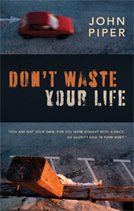
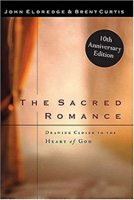 The Sacred Romance: Drawing Closer to the Heart of God
The Sacred Romance: Drawing Closer to the Heart of God 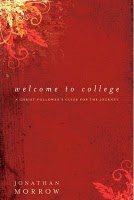 Welcome to College: A Christ-follower’s Guide for the Journey
Welcome to College: A Christ-follower’s Guide for the Journey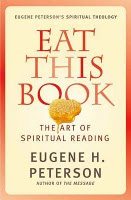 Eat This Book: The Art of Spiritual Reading
Eat This Book: The Art of Spiritual Reading 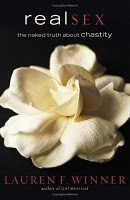 Real Sex: The Naked Truth about Chastity
Real Sex: The Naked Truth about Chastity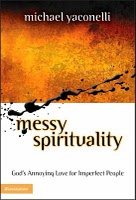 Messy Spirituality: God’s Annoying Love for Imperfect People
Messy Spirituality: God’s Annoying Love for Imperfect People 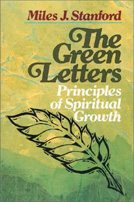
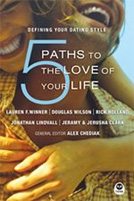 5 Paths to the Love of Your Life: Defining Your Dating Style
5 Paths to the Love of Your Life: Defining Your Dating Style 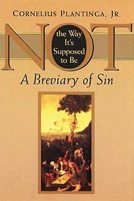 Not the Way It’s Supposed to Be: A Breviary of Sin
Not the Way It’s Supposed to Be: A Breviary of Sin